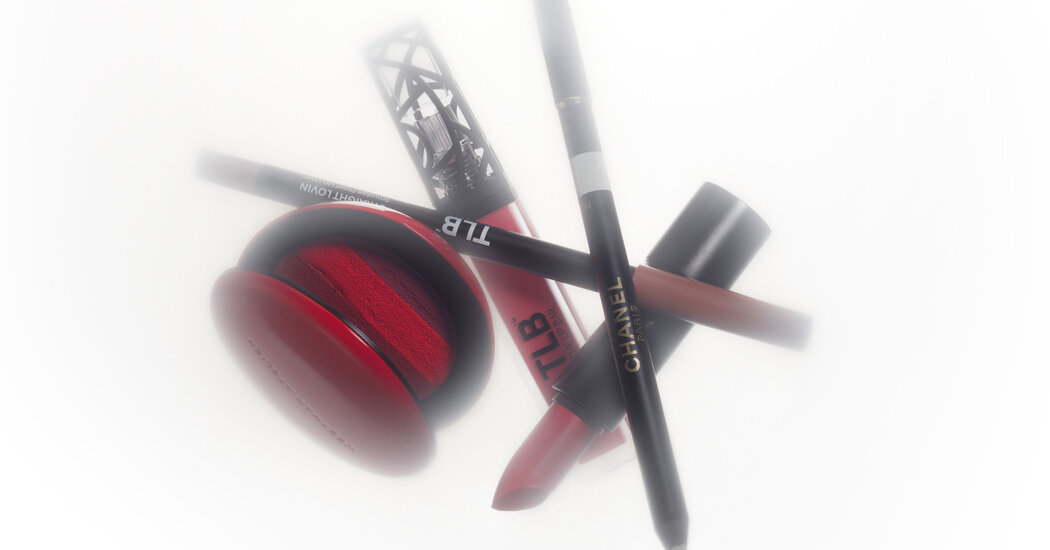Lipstick has been used, in various forms, for millenniums, but the struggle to make its color last has, seemingly, existed for just as long. Solutions have included the pots of red ocher that were often buried alongside mummies in ancient Egypt, to ensure a russet-lined smile well into the next life, and the potent mercury-laced vermilion mixture that was applied to rosebud effect in the Elizabethan era. Why go to all this trouble? Perfectly tinted lips “make you look finished and polished like nothing else can,” says Jenn Streicher, a makeup artist and founder of the New York beauty boutiques Scout and Duchess. Here, a guide to applying lipstick like a professional.
Prep Your Lips
Begin by sloughing off any dead, flaky skin. “I have clients run a really hot washcloth over their lips,” explains Daniel Martin, a makeup artist and the global director of artistry and education at the beauty brand Tatcha. “The water hydrates, and you are physically removing the dryness.” Next, Martin applies a slick of Tatcha’s moisturizing Kissu Lip Mask ($29) that he allows to sink in while completing the rest of his client’s skin care routine. (When she’s on the go, Streicher reaches for Ada Lip Beauty’s Lip Rally [$18], a stick-shaped scrub made with exfoliating sugar beads and hydrating plant butters.) An important, often-overlooked next step is to wipe away excess oils before adding color. As the Chanel makeup artist Tasha Reiko Brown explains, if an emollient product hasn’t been fully absorbed, “the wax of a pencil will not grab onto the lip; it will just float in the moisture.” To avoid the problem altogether, she preps with Chanel’s Le Lift Soin Lèvres et Contours ($95), a light cream with a matte finish.
Use a Liner
Liner can help prevent color from fading or feathering outside of the natural border of the lips, but it’s often applied incorrectly. Brown’s technique, which ensures the pigment wears away evenly, is to fill in the entire mouth, rather than just lining it. She suggests applying liner while smiling, so your lips are taut. Begin by tracing the very edge of your lips with the pencil then color in the outline you’ve created. Martin, on the other hand, prefers to apply liner after lipstick, to touch up the edges. “This really helps to seal the deal, exaggerating or finishing off the shape more perfectly without leaving that pesky ring behind,” he explains. If you’re skittish about lining, you might consider instead using a clear wax pencil, such as Chanel’s Le Crayon Lèvres ($35), to stop color from bleeding into fine lines around the mouth. Alternatively, a pencil that’s close to your natural shade can produce a soft, subtle effect. Try one from The Lip Bar’s range of Straight Line Creamy Lip Liners ($10).
Apply Lipstick — Then Apply Again
“You want a color that will stain,” explains the makeup artist Gucci Westman, who is partial to the tomato and fuchsia hues in her namesake brand’s Lip Suede: Les Rouges palette ($85). She suggests “a matte texture and a shade that is dark, deep or bright and super pigmented.” Matte products contain fewer oils, which makes them less prone to smudging. But they can also be drying and feel heavier than a gloss or salve. For the sake of easy application, The Lip Bar’s Nonstop Liquid Matte ($14) — which comes in 21 bold tones, ranging from brick red to orchid purple — goes on like a gloss at first, as does Violette’s Petal Bouche Matte ($28), whose final texture Streicher compares to that of “a rose petal.” But to the makeup rookies she encounters at her stores, she recommends Madame Gabriela’s manuka honey and plant-oil-infused collection of lipsticks, ($35), which have a satiny balm-like feel.
